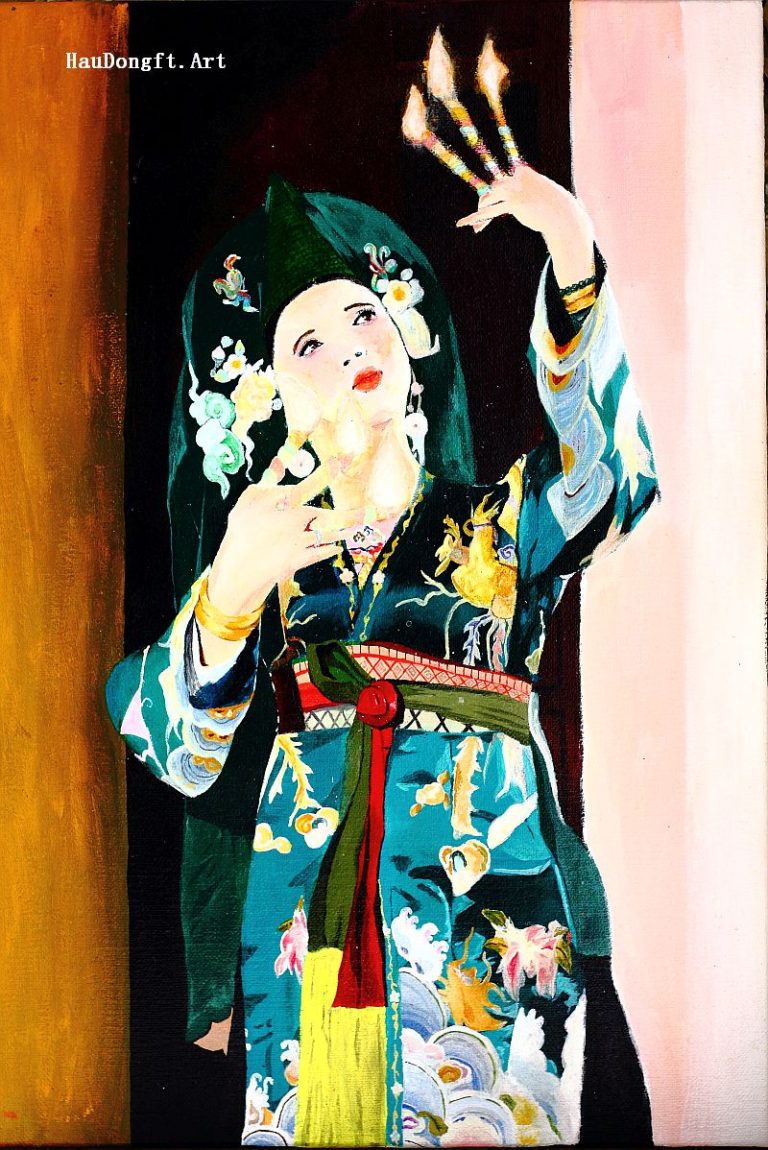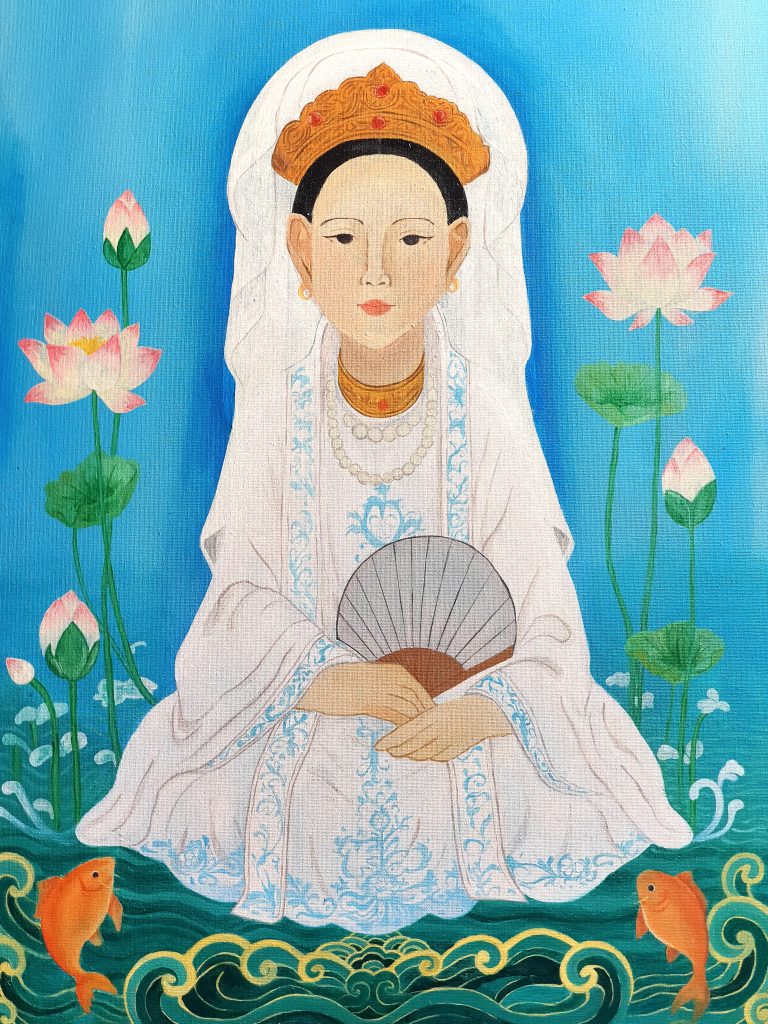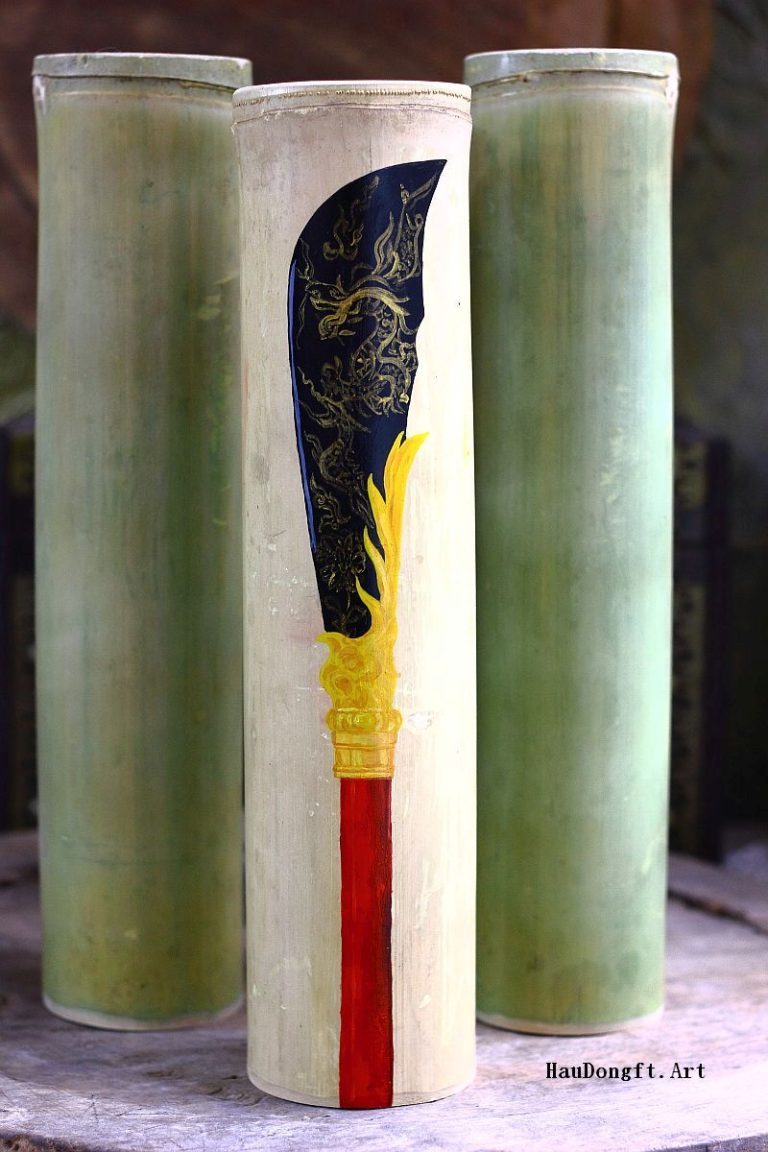
Hầu đồng is not only performance but also a sacred spatial experience where architecture, decoration, sound, and collective participation create a threshold between the human and divine. The Ritual Space Zone creates the multisensory atmosphere of a lên đồng ceremony in a respectful, educational, and interactive way. Participants will step into a real-life ritual environment to understand how space itself shapes transformation and healing.
Participants will:
3. Core Components (field trip to Huong Nghia Temple)
a. Entrance Gateway
b. Altar System
Participants visit different altars with thrones, ceremonial objects, and offerings (flowers, fruits, candles), take photos and ask temple keeper to explain about the meaning of each.
Descriptions of the Temple (compiled from participants’ report):
Today, Hương Nghĩa Temple stands prominently in the heart of Hanoi’s Old Quarter, occupying a picturesque location. Its architectural layout consists of a gate, narrow courtyard, and main sanctuary in the shape of the Vietnamese character “Đinh” (丁). The simple two-tiered, eight-roofed brick gate faces the bustling Đào Duy Từ intersection. Passing through the gate leads to a brick-paved courtyard and into the main temple hall, which consists of a front worship hall (tiền tế) and a rear sanctuary (hậu cung).
The front worship hall has three bays and two side compartments, constructed with brick walls and a traditional tiled roof. The roof is supported by six wooden trusses in the chồng rường con nhị style, intricately carved with stylized floral motifs. The central bay features wooden partition doors carved with blooming chrysanthemums, their sharp petal tips resembling spears.
The rear sanctuary is a three-bay structure connected to the front hall by a covered passage. Its roof frame is simpler, with undecorated wooden trusses.
Among the temple’s precious relics are:
One of the couplets reads:
“Duyệt ngã Nam tiền thông giám di biên thuỷ hoá, cổ trung tiêu tiết nghĩa
Kiến La Thành tam danh từ trĩ lập, địa linh thánh tích đối linh hương”
Translated:
“In the chronicles of our southern land, history records noble loyalty and virtue.
In Đại La Citadel stand three renowned temples, sacred relics steeped in fragrance.”
Hương Nghĩa Temple, with its legends of Cao Tứ and Princess Phượng Minh, is a valuable source of Vietnamese folk history. It embodies the devotion of Thăng Long–Hanoi’s residents to their ancestral heroes from the nation’s early struggles for sovereignty. It enriches the Old Quarter’s spiritual atmosphere, adding depth and historical resonance to this storied neighborhood.
c. Immersive Observation Stage (at Huong Nghia Temple)
Photos of the ritual taken by participants:
d. Participant Roleplay Station ( in Huan Oanh Academy workshops)
5. Educational & Preservation Value
. Evaluation & Impact
Stepping inside the ritual environment, participants feel the multisensory intensity of hầu đồng – incense fragrance, visuals, drumming pulses, and sacred architecture. Through roleplay, they understand that rituals are not passive shows but collective enactments where every disciple has meaning. The trance simulation leaves participants with insight into how altered states emerge from the interaction of space, sound, and body.
Below are the reflections by five participants after attending a hầu đồng ritual & a ritual workshop:
Lan – Architecture Major
“When I first stepped through the brick gate of Hương Nghĩa Temple, I was thinking only about spatial composition—roof pitch, truss joints, light diffusion. But as the incense thickened and the drums began to echo, the space stopped being just architecture. It started breathing. The carvings, the rhythmic pulse of the chầu văn, the trembling of the altar candle, all synchronized like a living organism. I realized that sacred architecture doesn’t just contain ritual; it creates it. The line between structure and spirit blurred. I left with a humbling awareness that design can be more than form, it can be a vessel for transcendence.”
Minh – Folklore Scholar
“I had read about hầu đồng dozens of times, always analyzing it through texts and theory. But watching the medium’s trance in person shattered my academic distance. When the music swelled and her gestures transformed from delicate to heroic, I felt an involuntary surge of emotion, like witnessing an ancient current of Vietnamese consciousness flow through her. The boundaries between performer and deity, scholar and believer, dissolved for a moment. I understood then that fieldwork is not about collecting data; it’s about surrendering to lived knowledge, about letting culture speak through sensation before intellect.”
Aya – Japanese Exchange Student
“At first, I was nervous. The red veil, the gongs, the chanting – it all felt unfamiliar, even intimidating. But then something shifted. When the medium smiled and scattered rose petals toward the crowd, I felt unexpectedly included. People weren’t performing for the gods; they were celebrating with them. The ceremony reminded me of Shinto festivals back home, where sound, color, and movement unite people in shared reverence. By the end, I no longer felt like an outsider. I had entered a world where devotion was expressed through beauty, and beauty itself became a form of faith.”
Tùng – 17-year-old Hanoi Student
“Growing up in Hanoi, I used to walk past temples without ever looking inside. They felt old, dusty, irrelevant. But during this visit, I saw the temple come alive. The air shook with drums; the medium’s costumes flashed with colors I’d never noticed before. When I helped tie the silk scarf around her shoulders during the roleplay session, my hands trembled, not from fear, but from respect. I realized that these rituals aren’t superstitions; they’re living expressions of identity and memory. For the first time, I felt proud to inherit something ancient yet still breathing in our city’s heart.”
An – Workshop Facilitator
“What struck me most was the emotional choreography of the ritual. Every sensory element like incense, chanting, color seemed precisely tuned to shift the participants’ states of mind. Watching the medium’s face soften from human fatigue into divine serenity, I saw a form of collective therapy unfold. The disciples’ synchronized responses created a field of empathy that transcended words. In our post-session discussion, several students described feeling lighter, calmer, or connected. It affirmed for me that rituals like hầu đồng are not relics; they are indigenous technologies of healing, harnessing the psyche through art, rhythm, and belief.”










© 2025 Hau Dong Featuring Art. All rights reserved. Contact